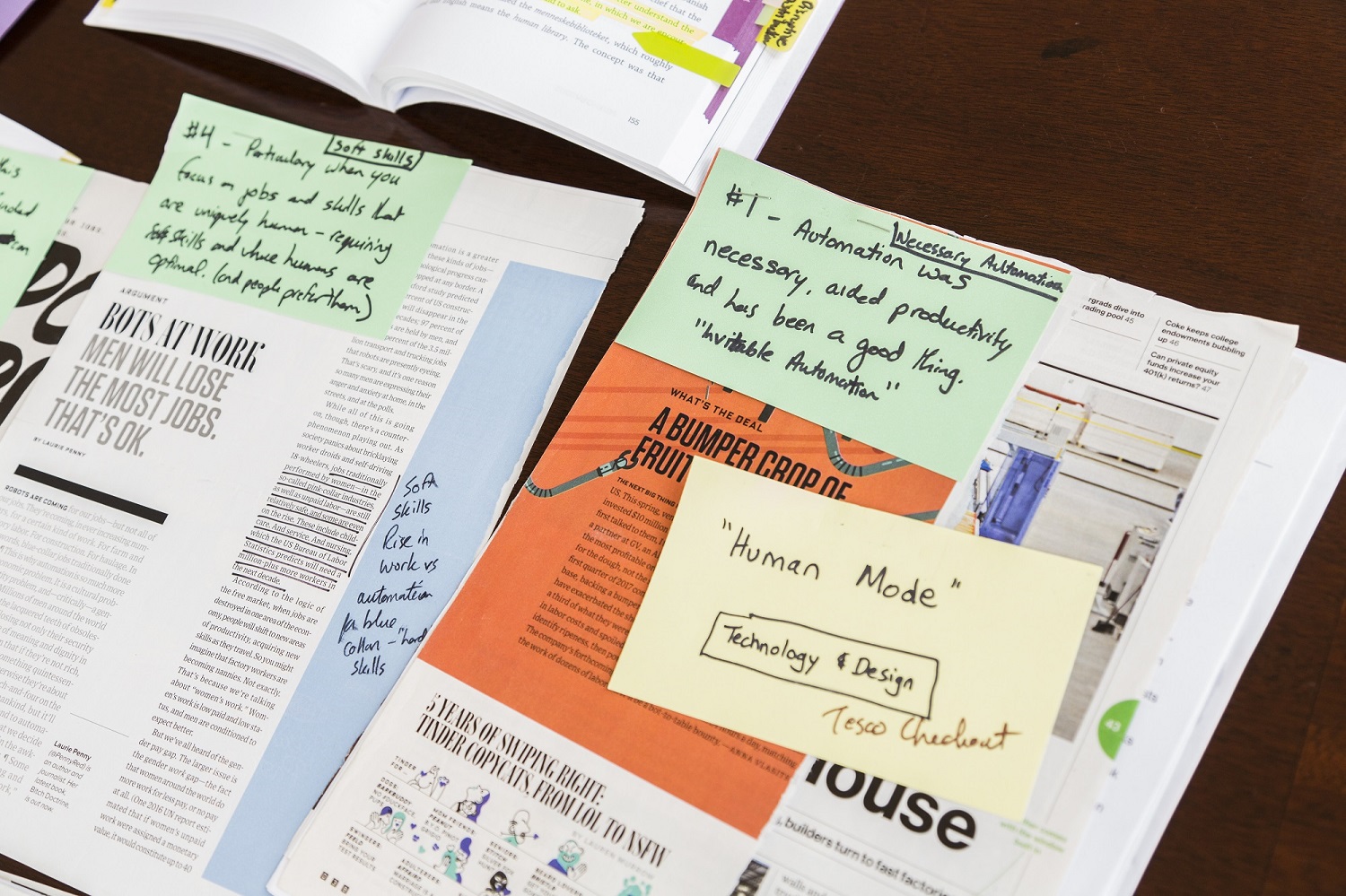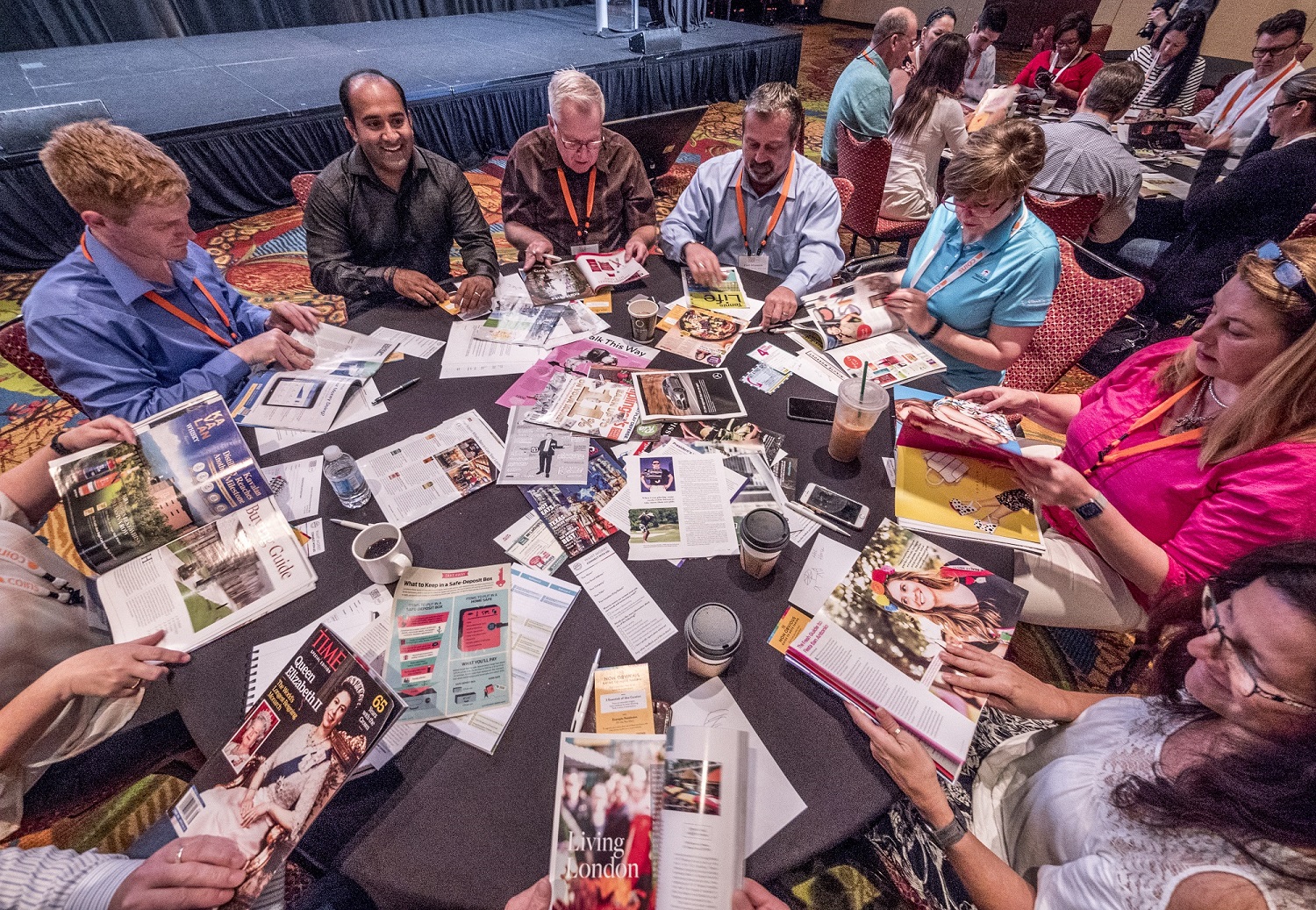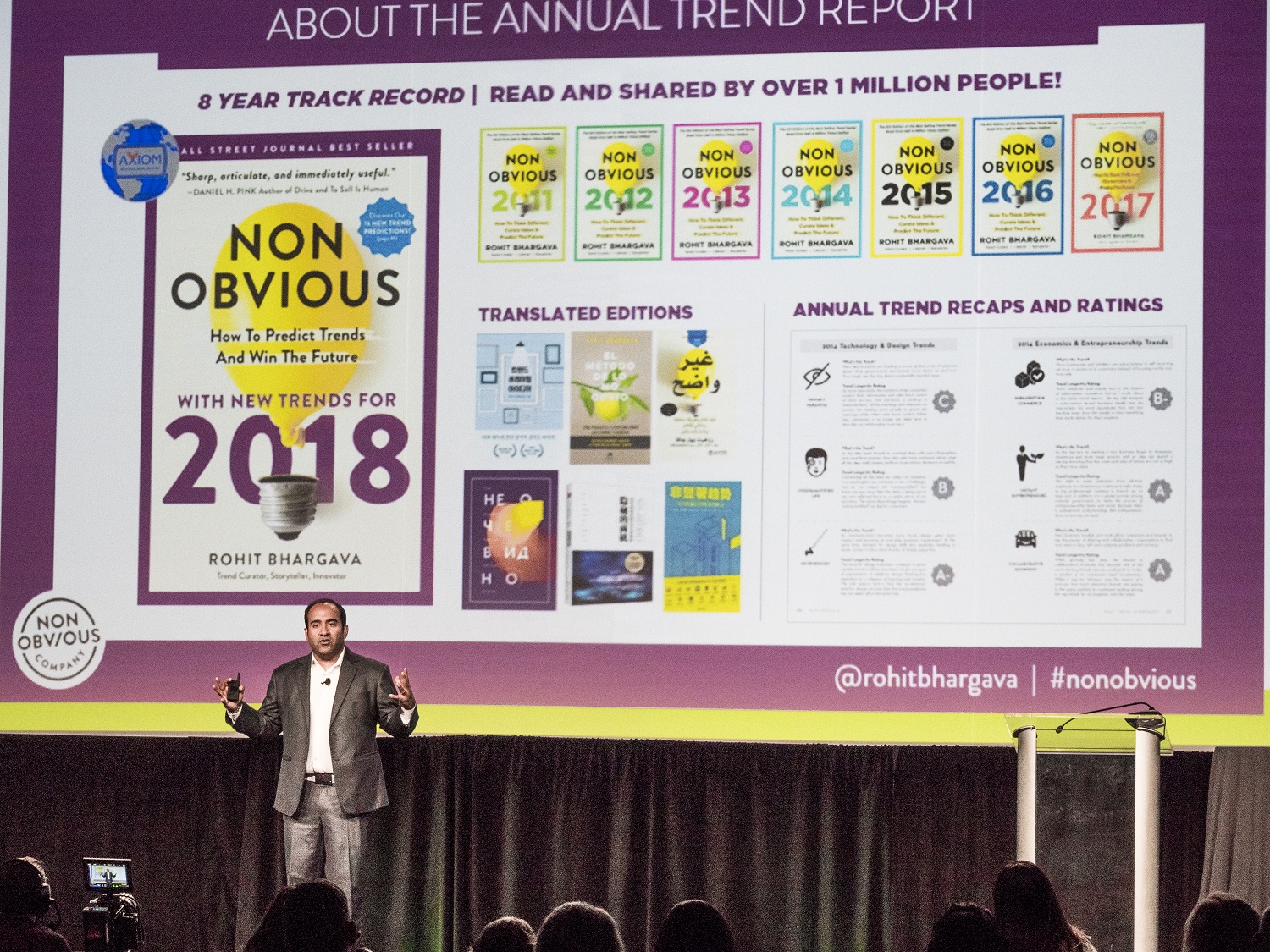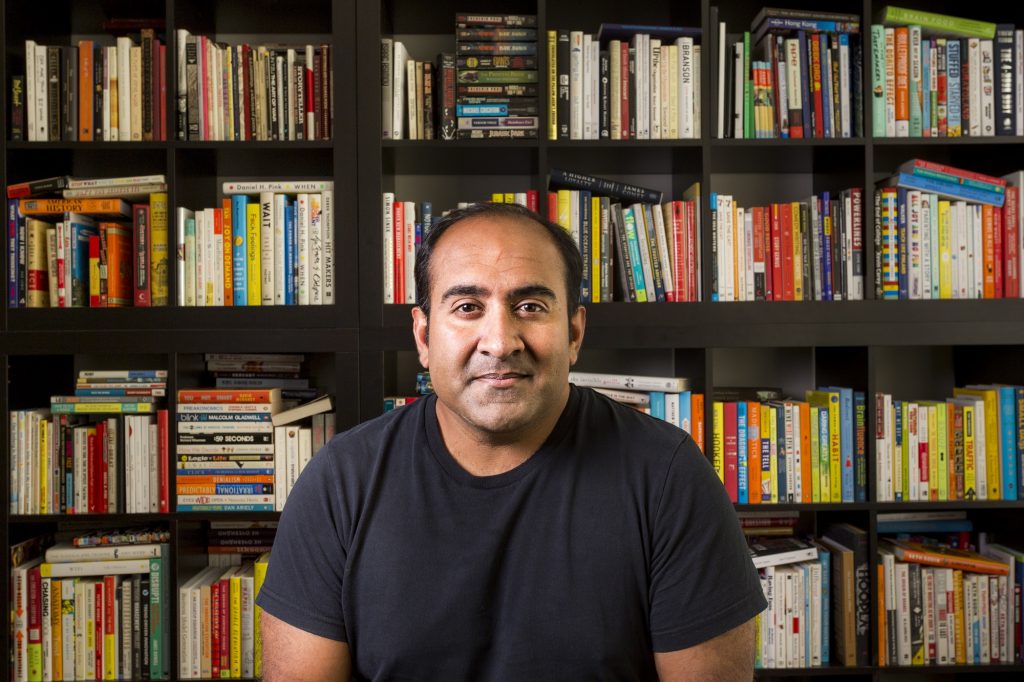Rohit Bhargava: How to see trends that other people miss
Rohit Bhargava is an innovation and marketing expert who curates trends to help brands and business leaders see what others miss. A former marketing strategist at two global agencies, Bhargava is a popular keynote speaker and author of the book “Non Obvious,” which he updates every year with 15 new trend predictions. We caught up recently with Bhargava when he spoke at Microsoft in Redmond, Washington.
TRANSFORM: What’s your process for curating new trends?
BHARGAVA: I read a lot. Every week, I’m reading or skimming hundreds of stories, because I curate a weekly email. I’m a big fan of reading things not intended for me, like Teen Vogue when I don’t have any daughters. It’s a world totally unfamiliar to me and so I’m forced to challenge what I think.
So the first element is collecting ideas, whether it’s ripping out magazine stories, listening to another speaker or having conversations through lots of different workshops. Then it’s seeing patterns between them. The more stories you find, the more relationships you see.

TRANSFORM: You define a trend as a “curated observation of the accelerating present.” What does that mean?
BHARGAVA: Observing the present is clearly possible, but the challenge is to spot patterns in the present that lead you toward the future and impact what we believe.
You’re trying to spot meaning inside the noise through the principles of curation. For me, a trend is not a description of something that exists. For example, a trend would never be 3D printing, because that’s just a technology that exists, but doesn’t describe any sort of behavior shift.
TRANSFORM: The 2018 edition of “Non Obvious” lists “human mode” and “virtual empathy” as two tech-related trends. What are they?
BHARGAVA: Virtual empathy is the idea that we have more technology and experiences that allow us to have empathy for people not like us or in situations unfamiliar to us. It’s virtual or augmented reality experiences today that can allow us to feel what it is like to be a prisoner in solitary confinement or a refugee in a holding camp.
There are also examples which allow us to experience virtual empathy without the use of VR goggles, such as an art installation in the U.K. called “Pollution Pods” that lets you experience pollution in Beijing and clean air in Norway, as opposed to just looking at pictures of them.
Human mode is the idea that despite the rise of automation, we continue to value human experiences. A beautiful example is from Tesco, a chain of grocery stores in the U.K., which created a slow checkout lane. It was the opposite of automation and an intersection of creating more empathy for older people or people with dementia.
TRANSFORM: How would an organization apply virtual empathy?

BHARGAVA: The most impactful way is usually to use technology to get inside the mind of your customer and experience your product or service the way they do.
For example, one great application of virtual and augmented reality is in automotive development. Instead of building a prototype car and then seeing how people use it, the virtual environment allows you to get more empathy for every type of driver by watching how they engage with a car.
How would an older person drive this car? How would a person with shorter arms drive it? Now you can see the results virtually and improve the overall development of new cars and shorten the development cycle.
TRANSFORM: What are some habits of people who think innovatively?
BHARGAVA: In “Non-Obvious,” I wrote about five specific habits. First, be more observant. If you’re walking down the street looking at your phone, you’re not seeing anything new. Next, be more curious. Then be thoughtful, which is taking a moment to think and not tweeting the first thing that comes into your mind. Be more elegant, which means choosing your words deliberately.
The last habit often surprises people: being fickle. What I mean by that is to get better at saving ideas and moving on without dwelling on the same thing. People who do this can see connections, because they don’t go far down one particular direction without looking up and saying, “Wait a second. Is this correct or am I just following my GPS into a dead end?”
TRANSFORM: How do you know if a trend has accelerated over time?
BHARGAVA: To be honest, it has been difficult in the past to see how fast a particular trend is accelerating and its impact across more than a single year. To more easily see how these trends have evolved over time, this year my team and I partnered up with Microsoft around Power BI and data visualization.
It allowed us to use data storytelling to see patterns in our years of trend research that had not previously been easy to see. For example, a trend from probably five years ago that we called “powered by women” – about female business leaders – evolved into “fierce femininity,” evidenced in part by a new Hollywood blockbuster formula featuring strong women in leading roles in “Star Wars,” “Hunger Games,” “Wonder Woman” and other portrayals and celebrations of powerful women.
This past year, our exploration of gender dynamics evolved into a trend called “ungendered” – gender used to be a statement, then it was an identity and now it’s a question – what do I want my gender to be (and how might that evolve over time)?

TRANSFORM: How can business leaders benefit from applying trends, particularly in the tech industry?
BHARGAVA: When it comes to the future and trends in technology, there’s always a natural intersection. One of the big questions I get from business leaders is, “How can I be more innovative and help my team prepare for the future?”
The best thing is to help your team learn the mindset of seeing things that other people don’t. It’s a growth mindset of “I can learn more and do more and be more if I pay attention, keep my ears open and make connections.” This is the most important thing. In a world of rapid change, only the flexible and open-minded will survive.
To learn more, go to The Non-Obvious Trend Experience created with Power BI and read a profile of Bhargava at Microsoft Story Labs.
Top photo: Rohit Bhargava in his suburban Washington, D.C., home. (All photos by Brian Smale)








